Heading out the door? Read this article on the new Outside+ app available now on iOS devices for members! Download the app.
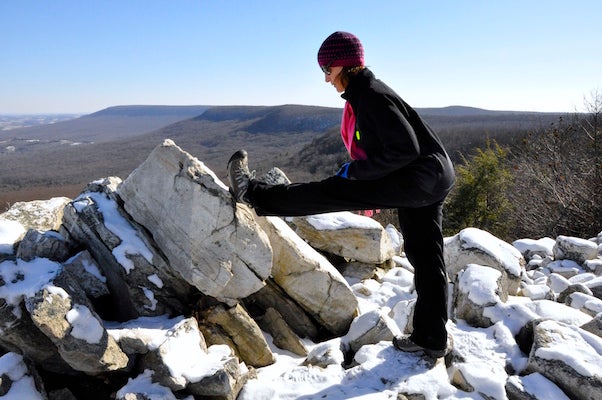
Shift weight to one leg with a slightly bend knee. Extend other leg forward on surface no higher than your hip. Inhale tall, draw belly in, and gently exhale, folding forward from hip joint. You can place hands on quad for support. Do not lock your knees! For deeper stretch, draw top toe toward shin and pull hips back, sitting further into the stretch.
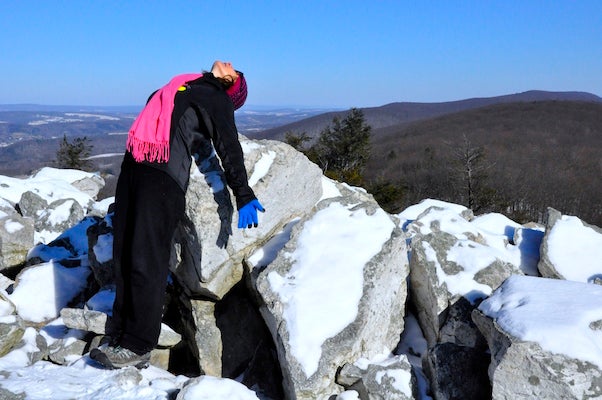
Find a stable rock, mid-back height. Plant feet and lean back onto the rock. Inhale first, then exhale to lift the chest, reaching tall from your fingers to your toes.
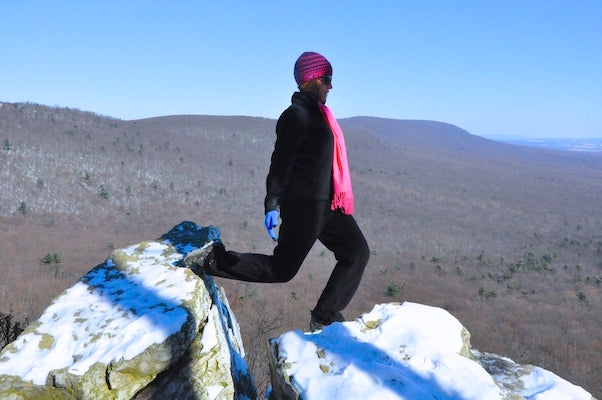
Plant two feet and look down. Shift your weight over to one foot. Reach other foot back, resting it on a rock or tree at knee level. Bend bottom knee. Put hands on your hips, draw your belly in, tailbone down, shoulders back, and lift your chest. Switch legs.
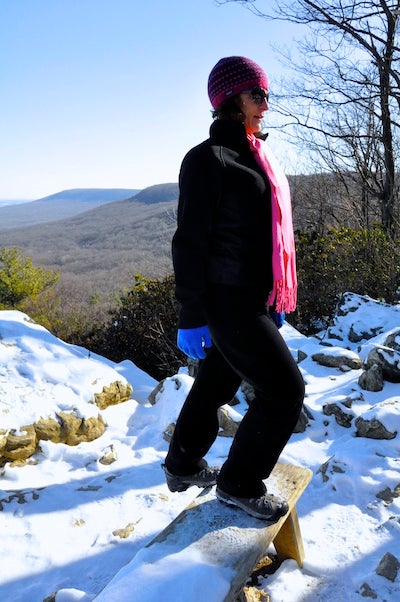
Find a slanted rock or bench to get a new twist on this classic stretch. Place balls of feet on surface and drop one heel as you rise tall through the spine. Switch legs.

Find two trees the width of a door. Reach your hands down past your hips. Place forearms on the trees. Inhale, and lean through the tree. As the shoulders are pulling back, your chest should be rising, stretching your sternum, ribcage and collarbones. Feel the squeeze in the upper back. Breathe.
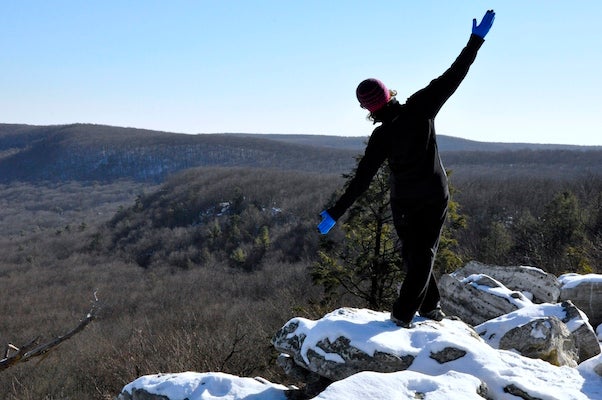
Use this stretch to loosen up your IT band. Plant your feet and shift your weight to one leg, crossing the other leg behind like an “X.” Exhale, drawing your belly in, and open arms like a “T.” Lean into your “X” (toward your forward leg). Switch.
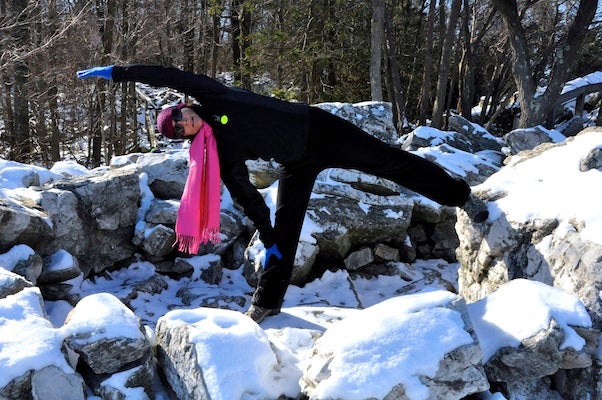
Plant your feet. Find a rock (or tree) one-leg length away. Bend your knees and shift your weight to standing leg. Reach other leg to rock. Inhale, opening up arms to a T, reaching bottom arm to thigh and upper arm to your ear. Drop your shoulders and lift your ribcage. Your core should hold you up. Breathe. Switch. Twist ribcage, neck and eyes to sky for upper body twist.
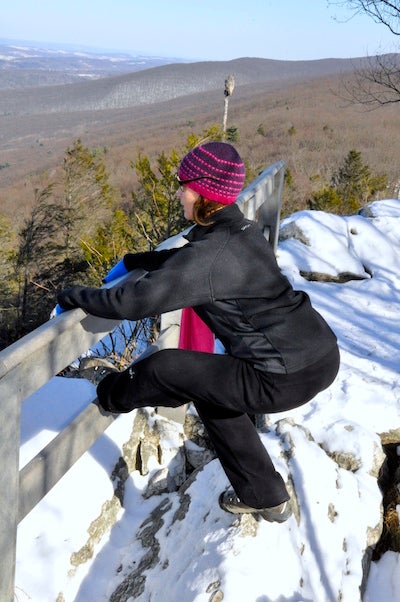
Face railing or park bench. Inhale, shifting your weight to standing leg. Lift up other leg and place outer edge of foot on surface. Inhale, pull belly in as you exhale, bending standing knee and dropping tail toward the ground. Switch.
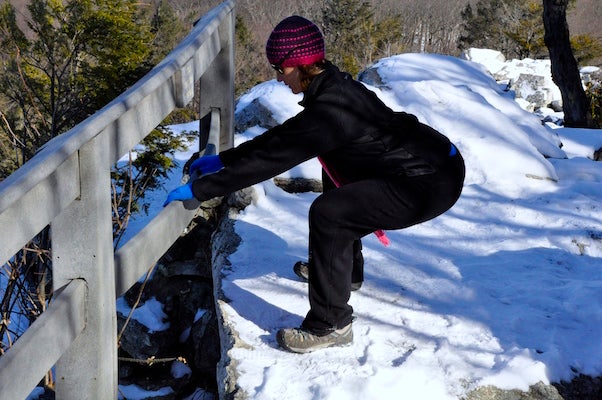
Eventually, nature will come calling, so good squat form is essential. Stand tall first. Exhale as you pull hips far behind knee joints. Use tree for support, or elbows on knees. Lift your arches in your shoes, taking your weight to the outside of your foot for low-back stretch.
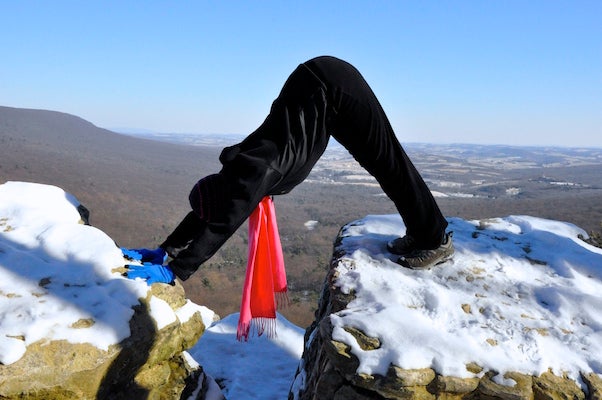
Yogis know this staple pose (or variation) stretches your legs, arms and core. To stretch: Plant your feet. Bend your knees. Stick your bum up, folding yourself in half. Walk your hands forward, shoulder width apart, spreading out your fingers. Inhale, and stick your bum up to the sky. Tight hamstrings? Bend your knees slightly. To return to standing: Walk your hands back toward your body. Put your elbows on your knees, sitting briefly in a squat. Rise to come out of the pose.
Need to warm up and stretch your muscles after a snowy winter hike? Certified personal trainer—and, full disclosure, my mother—Donna Dufoe demonstrates some stretches that can be done with the aid of a bench, railing, tree or rock along your hiking path.
Overall, the three most important things to remember are:
- Find a stable surface before stretching.
- Don’t ignore pain: If you feel serious pain from hiking or stretching, STOP. A little discomfort is okay, but do not overdo it.
- Hydrate, breathe and smile
From 2022